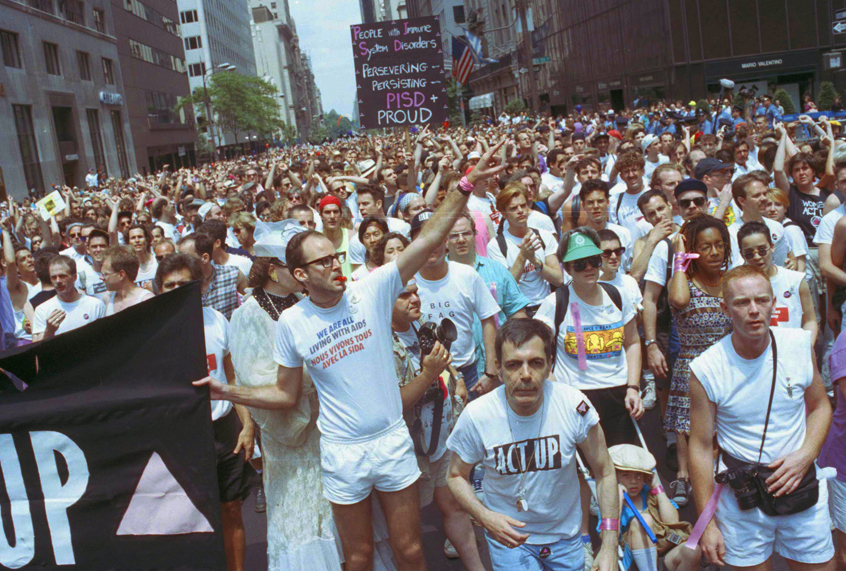The United States is not the only nation wrestling with opioid addiction. It is, however, one of the few nations unwilling to do much about it, even though the word “opioid” is spread across newspaper headlines daily, and Americans are dying of overdose in droves.
In western Europe, which is no stranger to heroin, people view opioid addiction the way most Americans now look at AIDS — as a medical problem that requires chronic medical care using medication, public funding for treatment and compassionate support. In the U.S., however, leaders and policy makers for constituencies most drastically affected by opioids are slow to make the same leap.
You could claim we are too big, our health care system is too unwieldy or that the stigma of addiction makes us too prejudiced. But you could also make those same claims for the HIV/AIDS epidemic. Doctors knew little to nothing about HIV/AIDS when people first started showing up with symptoms of vomiting, weight loss and rashes in 1981. Sixteen months after the Centers for Disease Control and Prevention first identified the disease, AIDS had killed 40 percent of those diagnosed with it — mostly young gay men, intravenous heroin users and sex workers. But we didn’t give up.
Grassroots organizations and the medical community eagerly mobilized to come up with a treatment for the mysterious and deadly immunodeficiency disorder that had never been seen before. The efforts paid off. The AIDS epidemic stopped being major headline news after effective pharmacological treatments hit the market in 1995 to treat HIV. Within two years, AIDS-related mortality rates in the United States dropped by more than half, from 50,000 to 20,000 per year. By 2014, fewer than 7,000 people had died of AIDS in the United States.
AIDS was at first highly stigmatized. Yet a massive public health response that included the training of health care providers, subsidies for treatment, grassroots mobilizing to ensure that treatment was accessible and free, public-facing campaigns against stigma and misinformation, and the creation of a separate office of research within the National Institutes of Health all worked together to accelerate the development of a new treatment. As a result of these efforts, AIDS was largely destigmatized and allowed to be treated alongside any other medical disorder.
Riding on the heels of the HIV/AIDS epidemic was the overprescribing of opioid painkillers, which helped to spearhead today’s ongoing crisis. Now, more than 20 years into the opioid epidemic, the number of Americans who die from opioid overdose every year is close to 50,000, neck and neck with the height of the AIDS epidemic.
Opioid addiction has high mortality rates because of the high risk of an overdose with each episode of use and the risk of developing serious medical and psychiatric problems, injuries and social issues. The rate of mortality in opioid addiction is six to seven times higher than in the general population, with death occurring in many users at a young age.
The kicker is that we have medication effective in treating opioid use disorder (OUD) and have had it for decades. The FDA approved methadone in 1972, buprenorphine in 2002 and extended-release naltrexone in 2010. Yet 80-90 percent of the 2.5 million Americans with OUD either do not know about the medication options, do not have proper access to them or do not know that they are their best chance at recovering from OUD.
In fact, only 10-20 percent of patients with opioid addiction receive medical treatment, in contrast to most other chronic medical disorders. But with a 90 percent failure rate, the traditional, nonmedical treatment approach offered to most OUD patients is clearly not working. Treatment with medications, however, can reduce the risk of a fatal overdose by 50 percent or more.
To slow down the accelerating rates of opioid overdose deaths, we can start by viewing opioid addiction the same way we now view HIV/AIDS, as a chronic disorder that needs long-term medical treatment delivered by primary care providers. Only then can we close the treatment gap and begin to end the epidemic.
If even 20 or 30 percent of health care providers were trained, supported and incentivized to treat people with OUD, our already well-established health care system could begin to help many more people and save lives — and money, as treatment with medication is far less expensive than the estimated $60,000 we pay per year, per person for those who continue to use. The French did it. So did the Australians. The United States can do it too.
Keeping effective medication away from people who need it is unethical. Declaring the epidemic a public health emergency and then stopping short of reforming the health care system is no better. I look forward to the day when “opioid” is no longer splashed across newspaper headlines, unless reporters are writing about how many lives we’ve been able to save.


